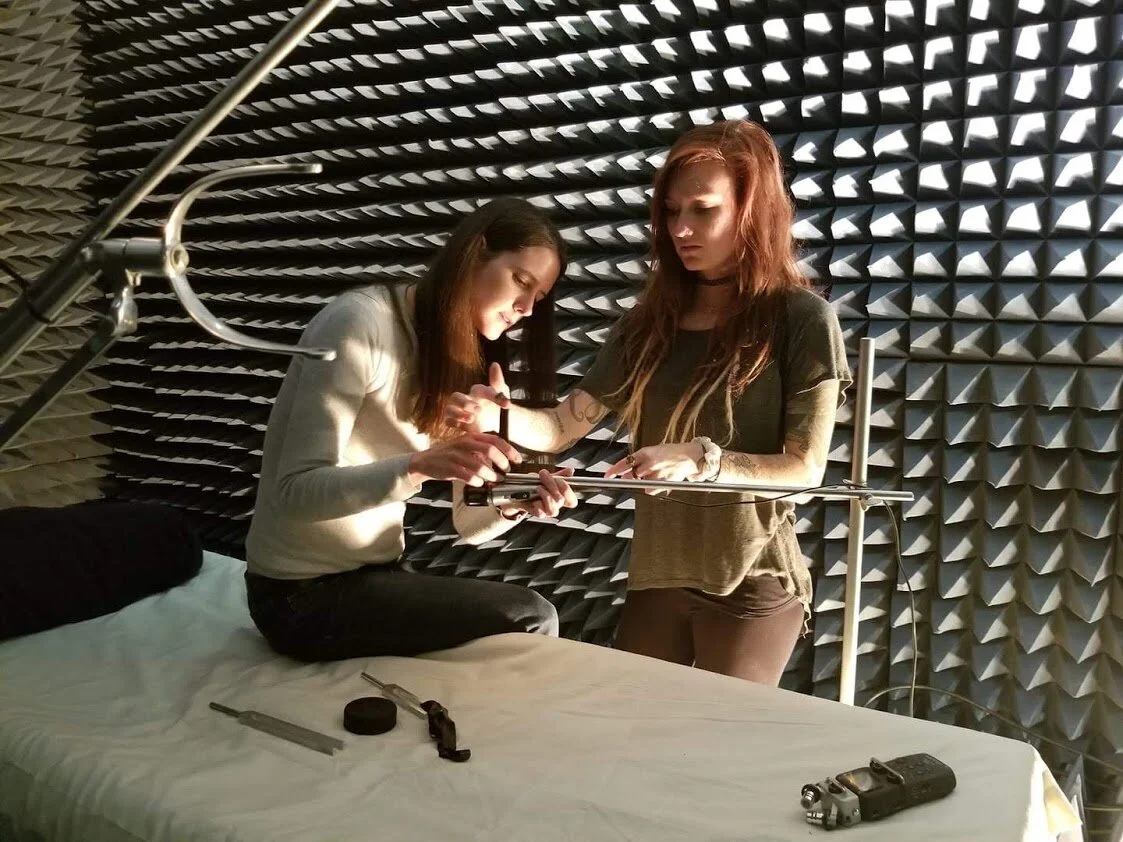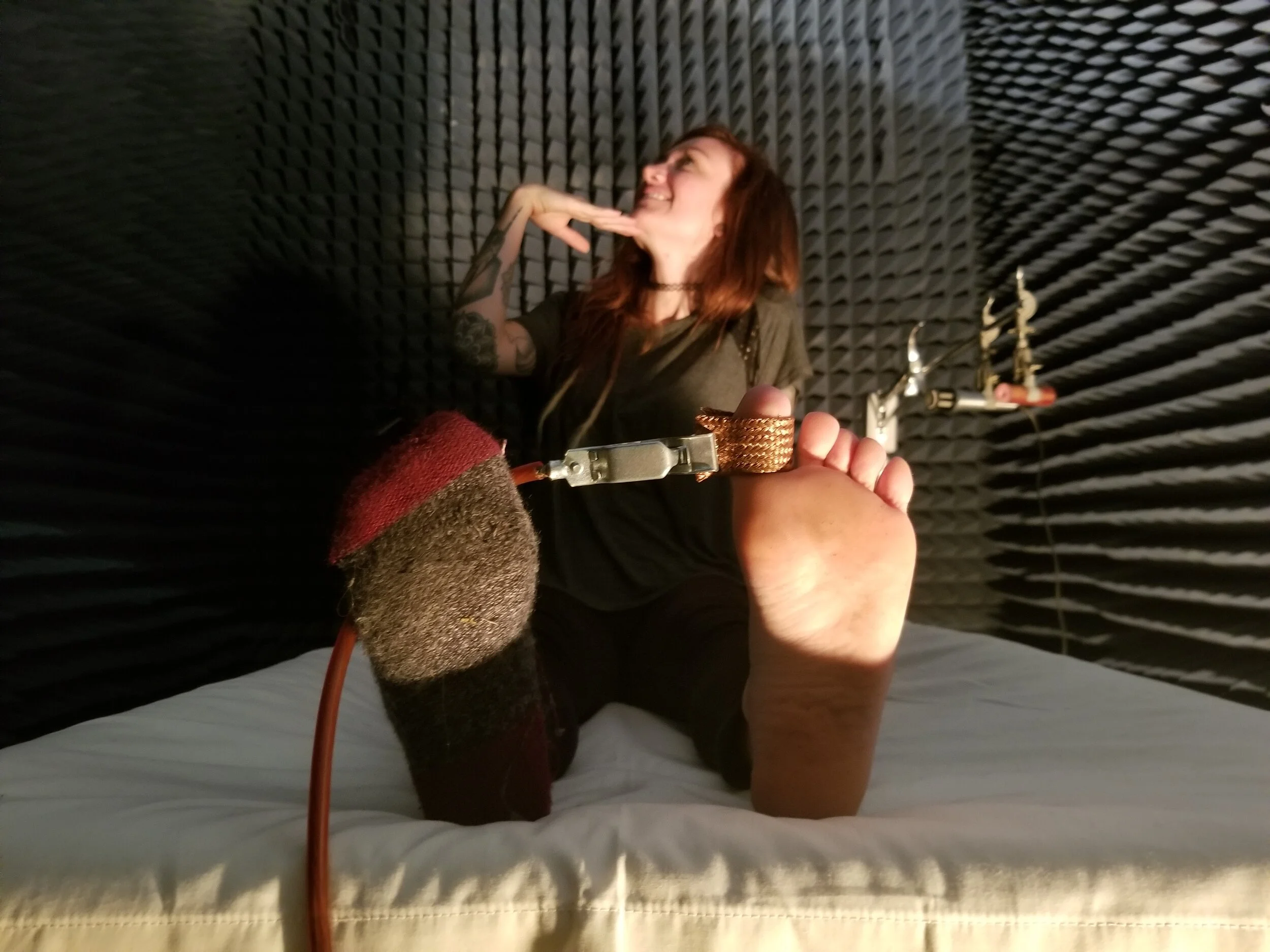Anechoic Chamber Experiments at Hathaway Research Laboratory
Eileen McKusick, myself & another colleague traveled to Hathaway Labs located in Toronto, Canada in May of 2019 in order to conduct some research in an anechoic chamber. An Anechoic chamber, simply put, means "anti-echo" or a room designed to completely absorb reflections of sound or electromagnetic waves. This room designed by George Hathaway was designed to also not allow EM (electromagnetic) waves from entering the chamber from the outside. The chamber is also grounded; meaning any excess electricity is safely directed to the ground outside.
We had planned to meet up with a Toronto-based recording studio but they no-called no-showed, so we made due with a zoom recorder, oscilliscope, spectral analyzer and good old-fashioned note taking. Despite the recording studio not showing up we were still able to make some incredible observations with the help of George Hathaway and his quick inventions he was able to create to support us in our research & observations (i.e. the boom).
We were observing what we noticed as the 1. Tuning Practitioner 2. the session Receiver and 3. the Witness. We had a copper grounding wire that we took turns grounding ourselves to see what we noticed. We also tried putting the tuning fork in a boom and moving the boom around (like an arm) to see the effect of human vs machine as Tuning fork operator.
The following observations were noticed:
- We loved the opportunity to freely create experiments in an anechoic chamber that was able to completely isolate the sounds from the tuning forks
- Grounding (at least) one of us during the session was necessary: the tone brightened immediatley with one of us being grounded. With no one being grounded we all felt clausterphobic and had difficulty breathing.
- The session went without issue when the Tuning Practitioner (TP) or Receiver (R) was grounded. This makes obvious sense to us and is why breathing and grounding is paramount in the beginning of one's session. Having only the Witness grounded still created feelings of unease in the TP & R.
- None of us felt well when the fork was in the boom; we experienced difficulty breathing, and felt dissassociated. However, the moment one of us touched the boom to complete the circuit we all noticed a huge improvement in our feelings sense.
- We noticed that when the fork was in the boom we were able to hear the fundamental tone but not many high/low tones. When it was in our hand we were able to differentiate the variation between the high/mid/ and low tones. This variation is important as the difference in tones allows us to discover patterns and "hear" emotions.
Next steps:
- We'd like to conduct further research in an Anechoic Chamber
- We want to do a Spectrograph analysis in real time
- We want our recording studio people to show up in order professionally record the sound :p
Sources:
www.eileenmckusick.com
www.biofieldtuning.com
www.hathawayresearch.com/



